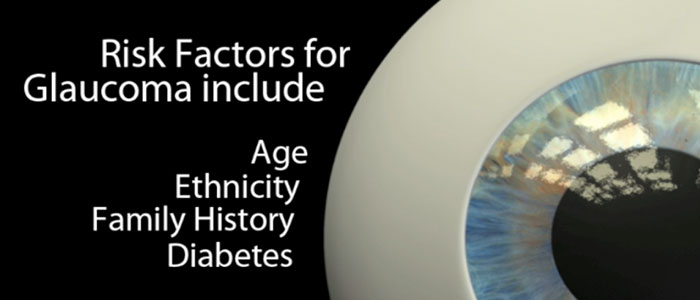
Glaucoma, often referred to as “the silent thief of sight”, can occur with no warning signs, pain or symptoms. It affects 3 million people in the United States and has caused blindness in over 120,000 people. Glaucoma cannot be cured, but if detected early can be managed to limit its effects.
Glaucoma usually occurs when there is an increase of pressure within your eye, but can occur with normal eye pressure as well. This pressure causes damage to the optic nerve, which is the weakest part of your eye, leading to decreased peripheral vision and possibly blindness.
Your eye is divided into two chambers, the anterior chamber at the front of the eye, and the posterior chamber at the back. A fluid, called the aqueous humor, is produced by the cilliary body and circulates between the two chambers to clean and nourish your eye. Once it reaches the edge of your iris it leaves the eye through an opening called the trabecular meshwork.
With glaucoma, more fluid is produced than can be removed, which leads to an increase in pressure in the anterior chamber. Eventually the pressure throughout your eye increases, exerting force on the neural fibers of your optic nerve. Over time this causes damage to the optic nerve, which leads to partial or total vision loss.
There are a number of risk factors for glaucoma including age, ethnicity, family history, and certain medical disorders such as diabetes. If you are at a higher risk for glaucoma be sure and consult with your eye care provider regularly to increase your chance of early detection.


